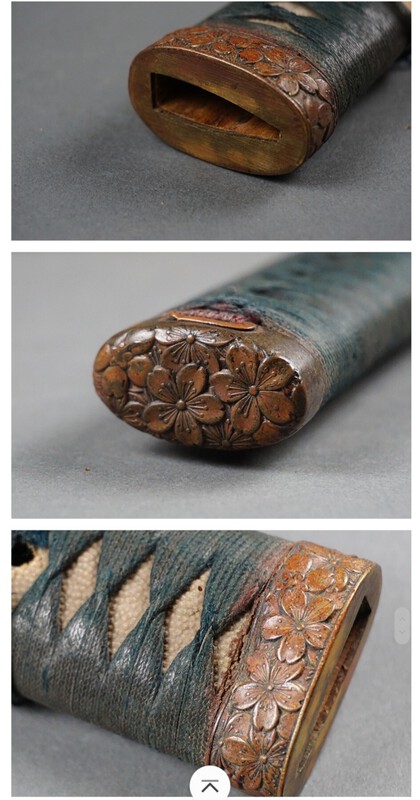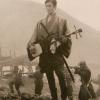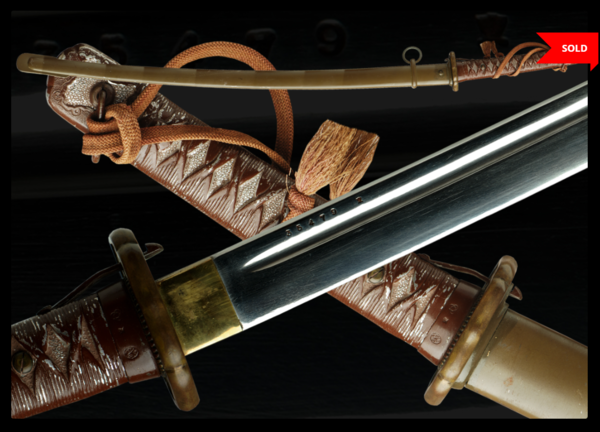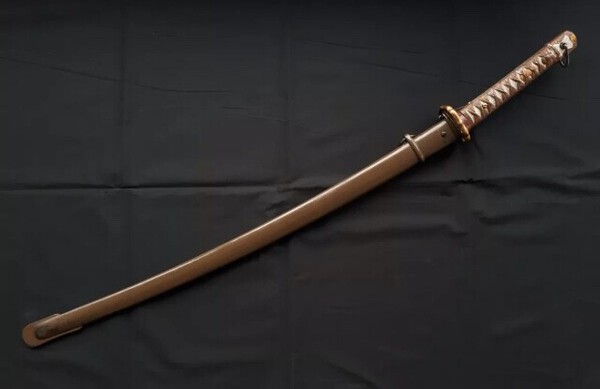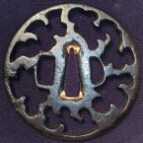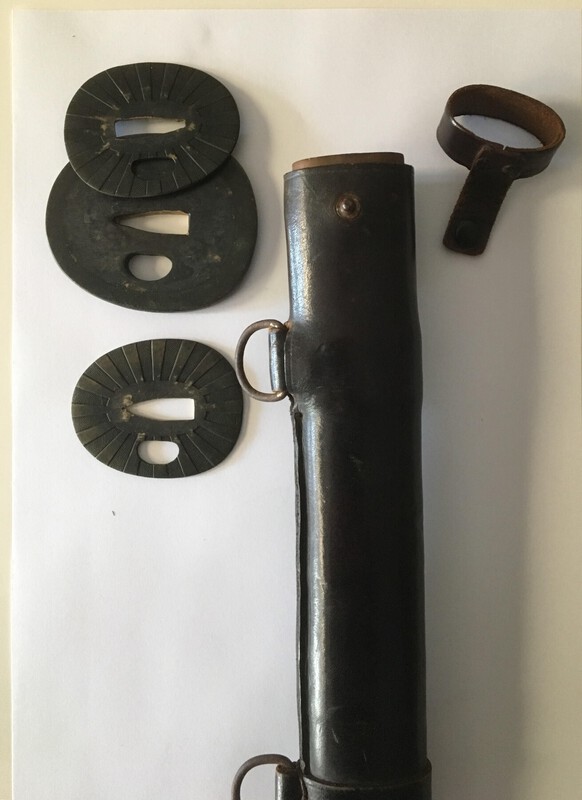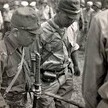Leaderboard
Popular Content
Showing content with the highest reputation on 11/14/2021 in all areas
-
5 points
-
Andy, @SteveM might correct me on this, but I'd say that's "Seki Masatomo". There is a Hiramatsu Masatomo listed on the RJT list, but no Kanetomo. I haven't been able to pin down a prefecture for Masatomo. @george trotter - have I asked you yet? This blade would put him in the Seki area, with likely would mean Gifu, right? Sorry, Andy, I got to chasing rabbits there! Your date is 1945, with a HORRIBLY inscribed "Sho" "Wa" before the numbers. I've seen some bad calligraphy on blades before, but this one takes the cake, as they say. It's also a bit unusual to see an RJT blade in "standard" Rinjiseishiki saya. I have seen it, but it's not common. They are usually in upgraded fittings. This being a 1945 date, though, may explain it. We had almost completely shut down sword production in mainland Japan in the last year of the war, due to bombing. There might not have been a whole bunch of custom fittings shops to choose from at the point this gunto was assembled.3 points
-
2 points
-
The top-most is a Type 19 Dress/Parade Kyu Gunto if we want to be super technical! Below is a kyu-gunto with a traditionally-made blade, a Nobuyoshi. And fret not, this picture was taken long ago, before I knew better than to let it lay on an unprotected floor. (the floor was just freshly waxed though).2 points
-
While Shokan is a great book and provides some detailed information on many Generals & Admirals it is far from exhaustive. This is a far more comprehensive list of IJA Generals: https://generals.dk/nation/Japan.html2 points
-
2 points
-
1 point
-
Hello, I share with you an interesting historical armor from my collection, this object belonged to HORI HIDEMASA a Daimyo of the momoyama era. This armor is from the early Momoyama period (around 1575), probably donated by Nobunaga. Indeed on the "Kote" is found the Mon of Oda and an impressive Kashiradate in the shape of a nail which is a reminder of the Mon of HORI (Mon in the shape of a nail puller): The armor dates from the period when Hidemasa was in campaign in the service of ODA Nobunaga between 1572 and 1582. Mon from HORI clan : In 1566 at the age of 13 he entered as a page in the service of Oda Nobunaga, in 1572 he was present during the campaign against the Azai and the Asakura (The Chronicle of Lord Nobunaga / by Ota Gyuichi; translated and edited by JSA Elisonas and JP Lamers). In 1575, he took part in Nobunaga's assaults against the Ikkō-ikki of Echizen province and fought the saika-ikki two years later, commanding Nobunaga's army in the company of Hashiba Hideyoshi and Sakuma Nobumori. He is also at the head of a corps of arquebusiers in several battles including that of Komaki and Nagakute which opposed him to TOKUGAWA IYEASU. On the death of Nobunaga he became one of the closest Daimyo to HIDEYOSHI until his death in 1590 at the siege of ODAWARA Castle, he participated in many campaigns with this armor. Détails from front and behind the Do : This armor comes from the collections of the LII ARMOR Museum in Kyoto and exhibited at the LIDA City Museum during a retrospective on the HORI family : The original bitsu :1 point
-
You might want to reach out to Woody for his opinion. If you’re going to get it polished anyway, then catching the rust early may be better than waiting. Mailing it with a heavy coat of oil should get it to him in good condition. He can give the best recommendation on how you should send it. And if I was worried about early rust causing more permanent damage, I would rather have it in the hands of the polisher who knows how to keep the blade stable until polish. All just my humble opinion.1 point
-
You can use electronics-grade isopropyl alcohol to deactivate the rust and then use some choji oil on it.1 point
-
Mark, if it passes shinsa in SF, then I would send the whole sword to Japan for restoration. That can include the saya, having new seppa fitted (I would recommend gold foil covered seppa), rewrapping the handle (does it have menuki?), making a tsunagi (wooden sword) for the mounts, making a shirasaya and, of course, polish and papers from the NBTHK (preferred to NTHK papers). Total cost would be $5000-8000, depending on work required.1 point
-
Mark, you had already the handle off! Just pull the metall parts backwards off the NAKAGO, that's all! Also remove the HABAKI in case it does not resist. Then you can make nice photos of the tang and the TSUBA. You might already know that it is important not to touch the naked blade with your fingers to avoid corrosion. Replacing the missing SEPPA is no witchwork. Our trustworthy expert dealers will supply what you need, but exact measurements will be needed.1 point
-
Many remarkable and top names across Bizen, Yamashiro etc master smiths….This is a right treasure and pity the person was robbed.1 point
-
That is a great site John, thanks. I have a Omi Daijo katana in general's mounts that have a family mon. When I get back home I will have to see if I can figure out who carried it!1 point
-
1 point
-
To me, it looks like 江氏, but that does not seem to be a place or a surname... It’s most likely some variant on Edo (such as 江府) Ps. The reading of 李 is ‘Sue’ (I think you may have mistaken it for 孝), and the name also use the older character 隨, but it still has the same reading as 随, so the smith’s name is most likely Sueyuki.1 point
-
1 point
-
1 point
-
Its a real sword. I like the fittings. The leather of the saya has gone. When you remove the handle we could see more.1 point
-
1 point
-
Not sure what could be causing that. I'll make some inquiries and see what I can come up with. For those with problems, please can you change themes once or twice and tell me if the same happens, so I can exclude that as a factor?1 point
-
Intentional texturing and snowflakes. Very frequent Ichijo ippa design. The topic of snowflakes and how the Japanese perceived them in art prior to a certain Japanese scholar studying them under a microscope is quite a more extensive discussion. I forget the man's name, but maybe someone else here will remember it. After many years in a tropical climate, I hope to actually see snow this year. Happy Holidays!1 point
-
On the lid: Ichijō (一乗) Snowflake design tsuba (雪華文鐔) Inside the lid: Cut-corner mokkō-shaped shakudō (隅切木瓜形赤銅) Snowflake design thick-rim (雪華文土手耳) Signature: Gotō Hokkyō (銘後藤法橋) Ichijō [kao] (一乗花押) Summer 1969 (昭和己酉夏) Recorded by Kanzan [kao] (寒山誌) [花押]1 point
-
I only have three words. WOW WOW WOW. ok four words beautiful. Thank you for sharing MikeR1 point
-
That's amazing. USPS should get into design-your-own; it would probably be a money maker.1 point
-
1 point
-
1 point
-
Boy, if it weren't for the bad bohi and the metal flaw by the numbers, it would be darn near perfect! This faker sure likes the 30,ooo number series, too.1 point
-
1 point
-
Thanks For the kind words Roger. Same applies to you.1 point
-
A few weeks ago I took a gamble on a blade, which partly paid off. A bit like a bicycle with one wheel missing? What would people advise? The idea of a Shinshinto Sukenaga has been playing on my mind for some years now, and so with some loose cash in my pocket I spotted one for sale, registration card attached. Not an accredited sword shop. A signed wakizashi in shirasaya, it had that vivid contrast between the jigane and the hamon, and the characteristic glint caught my eye. There were a few spots of rust here and there. Naturally there are many Gimei out there, so I freely admit this purchase was a conscious risk. I agree too that I broke all my own internal rules in the course of this impulsive buy. I took it home and phoned the Togishi to see if he thought it worth polishing. He took a good look at it, and then advised showing it to my sword Sensei first, which in due course I did. The answer after some examination was that it was Gimei indeed, a little disappointing for me, but it was his reasons that I found interesting. 1. There are the faded remains of a Bonji character on one side of the blade. He suggested that there should be another on the other side, but there isn't. 2. One of the strokes of the Mei, i.e. 山 has hit the edge of the Nakago and squashed out in a little bulge. This he said was unthinkable. 3. The Katte sagari Yasurime is all wrong, he said. Sukenaga followed his father in starting the yasurime in Kiri at the top. Gradually it starts to radiate downwards, as if these smiths were applying the file from the same standing point. (Today I saw a clear example of this at the Osafune Sword Museum.) 4. The Nakago looks to have been filed off at an angle on one side, as if an original Mei was erased before subsequent insertion of the long Sukenaga Mei. "On the other hand", he said, "this is a genuine Shinshinto Bizen blade in his style, very probably by one of Sukenaga's students." So there you have my problem. Do I keep the blade as a salutary learning lesson, and a beautiful thing in its own right, or do I let it go back into the system? It didn't break the bank, but it might be useful to try and get some of my cash back! From Mixed emotions in Kentucky1 point
-
Like Grey just suggested, I have also used Goo Gone to get some antique adhesive residue off a lacquered koshirae. It worked well and had no impact on the lacquer at all. I made sure to test it first, in a tiny spot in the slot for the kozuka, which I would also highly recommend doing before using any substances (other than a damp cloth) on your antique lacquer. Lacquer is pretty darn tough, but the last thing you want to do is discolor your already discolored areas, or worse still, make the discolored areas even larger. Best of luck!1 point
-
Hi Ron, This looks like it could be residue from the glue that held the label. I have used a liquid called Goo Gone, which I bought at a local hardware store. I used it first on a painted door with cellophane tape residue and there was no damage to the paint. I then tried it on a lacquer saya with glue or adhesive residue; the residue disappeared and there was no damage done. I would try it on just a tiny section 1st to see what happens. If it works you'll have to clean of the Goo Gone with a damp rag. Best of luck, Grey1 point
-
Hi Ron, I think you would be smart to leave the saya be until you can show it to someone with loads of experience at lacquer restoration. Any attempt you make may be successful but, starting from zero experience as you are, it may also be a mistake you don't recognize until it is too late. I have long thought that some of us here on NMB are way too quick to suggest do-it-yourself repairs to beginning collectors. Restoration advice without having seen even one picture of the problem is a mistake. No offense meant towards Darrel; just looking out for the swords. Grey1 point
-
1 point
-
Thanks Geraint, the owner of this armor commanded a corps of arquebusiers, most of the time he had to fight on foot. It is very possible that this armor did not have sode and that suneate and menpo were not worn on the battlefield. Mobility was essential as well as the need to be easily visible to his troops (the very large nail-shaped kashiradate) and the ability to give orders in the noise and smoke of firearms. obviously this is only an opinion.1 point
-
1 point
-
Do you mean translate? If so, the translation below is via Wikipedia. 八紘一宇 = hakkō ichiu = eight crown cords, one roof. Hakkō ichiu1 point
-
1 point
-
1 point
-
1 point
-
David McDonald in Montana has received an award in Japan for his work in tsuka-ito. I'm sure you'll find him in the links at the top of NMB and I'm sure you'll be pleased with his work. Grey1 point
-
I understand. My attempt at humor. And I do appreciate your explanation of the rationale for this thread. Thanks!1 point
-
ummmm no. my idea when starting this thread, was so that new collecters can learn from and aspire to own and preserve the better then average gunto. sadly due to the market levels the "averge" gunto now being lookied apon as being special or rare, which i disagree with. sorry that migh sound like me on a soup box. If the idea of low class gunto section was to be born it most likey will be filled with crap you can already see on "fleabay" or heavan forbid the obvious fakes that some members cling to in hope that they are genuine, being put in. thus distorting the line between of what genuine and wahts fact for the new collector.1 point
-
1 point
-
1 point
-
he he, well I'm quite proud of my friend and student, Marcus, calling it spot on. Obviously his eye has benefitted from superior tosogu appreciation training. 😂1 point
-
1 point
-
Congratulations. There is a lesson to be learned here for both new and old. There are big, and small name legitimate pieces from Japan (aren't they all) which do not have papers. Simply coming out of Japan or from a dealer without papers is no guarantee one way or the other of their legitimacy. Of course not all are legitimate, but for people to make such broad, sweeping claims is preposterous. This tsuba is in your face proof. It frustrates me every time I hear someone say with such intransigent authority, "If it is a big name and no papers it is gimei", or "If it came out of Japan and doesn't have papers, it's gimei", "it it is from a dealer and has no papers, it's gimei", or "Big name, no papers = no sale". I have brought many un-papered swords and fittings from Japan, which later went on to receive various levels of papers, from Hozon to Juyo. It has been my experience that there is only one rule for this hobby that is set in stone, and that is "nothing is set in stone".1 point
-
I live in Japan. It is my 5th year here. I see things coming out of the woodwork all the time. More often than not the seller knows little to nothing about the items they have. I have not purchased a single item with papers. I have in turn submitted many items that achieved T. Hozon. BUT I have a rather large library and can speak some Japanese. So the point I would like to make is; yes there are gems out there, but you must know what you are looking at. The above Tsuba is obviously Gimei IMHO Jim1 point

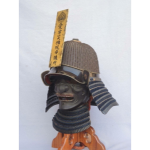


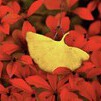
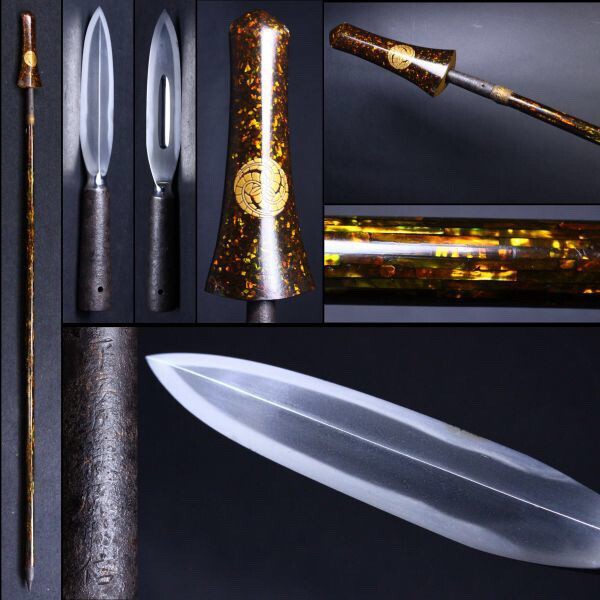

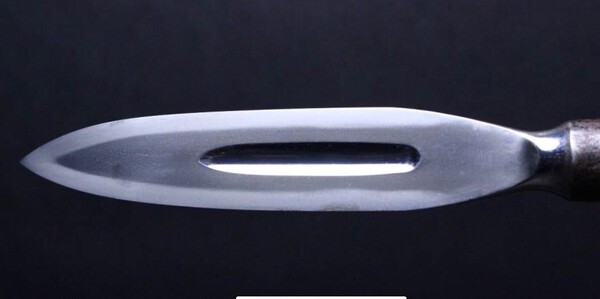
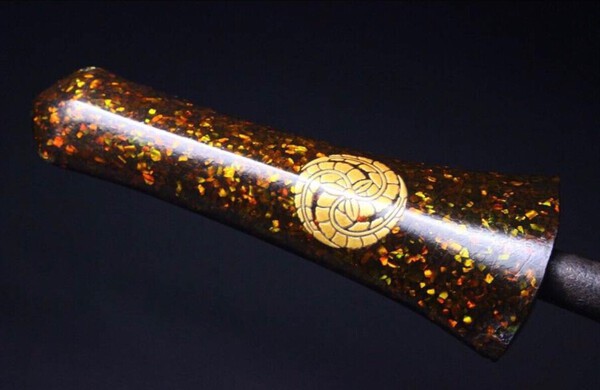

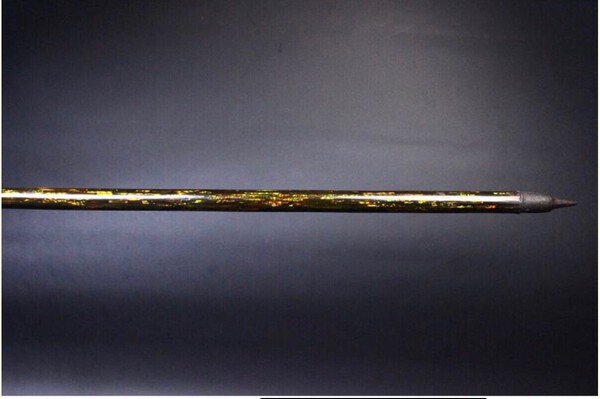
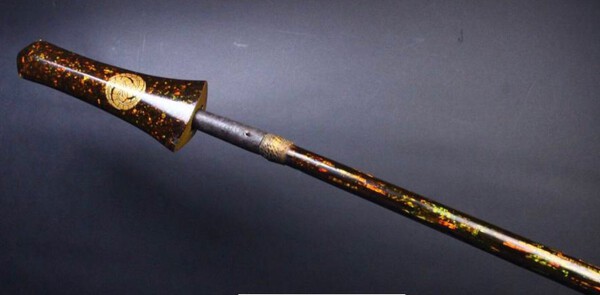
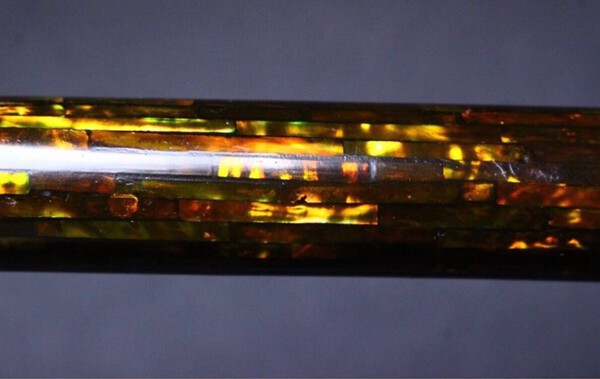






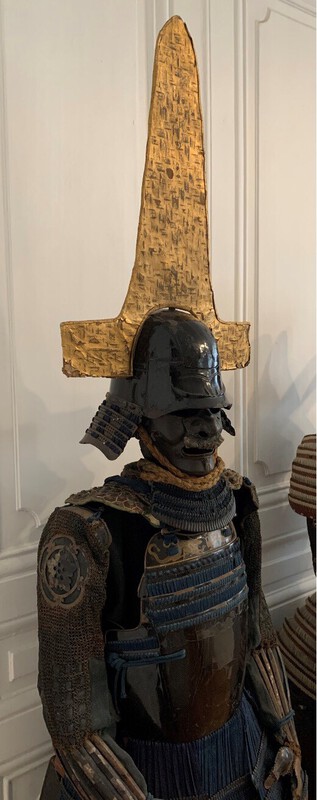

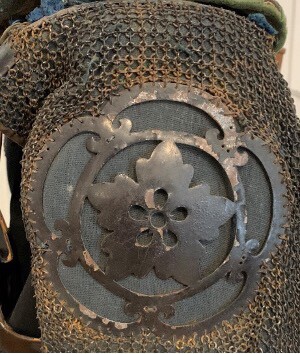
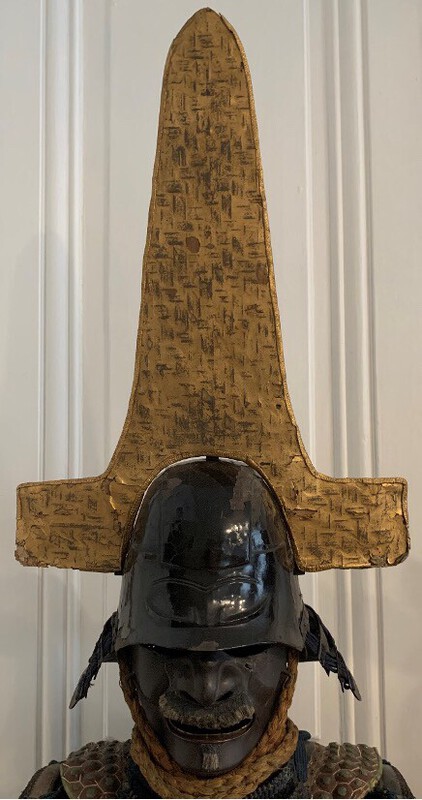


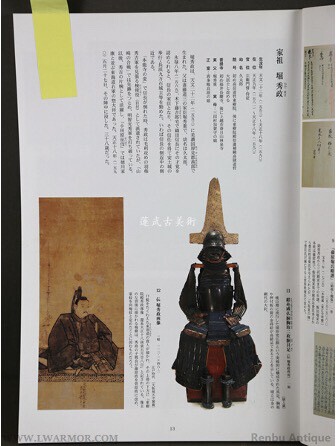
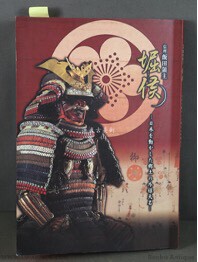

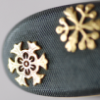



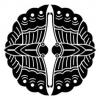

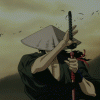
.thumb.png.6f15a83c9789a2a1265812e88b2b4c7d.png)
.thumb.png.f2142dc01fedcdcfa69bb9dd4ef5bad6.png)



